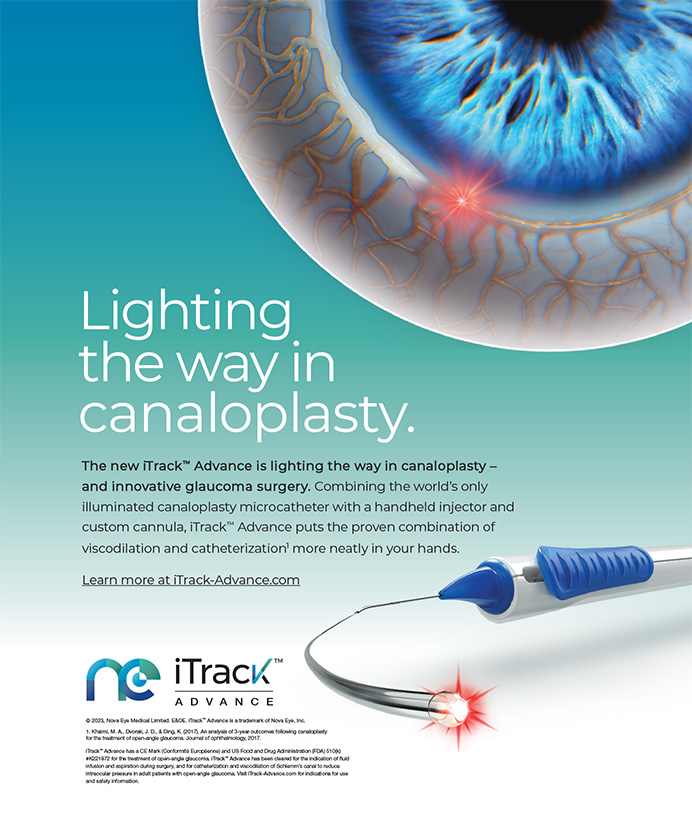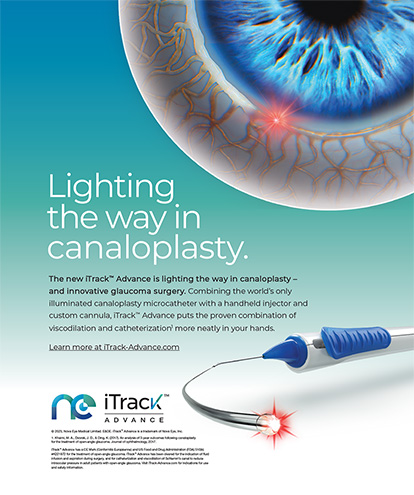Innovations | Jun 2005
A Day to Remember
David F. Chang, MD
In case there was any lingering doubt, recent events have made it official: cataract surgeons are also refractive surgeons. Patients have always wanted spectacle independence, and we've sought all along to reduce the size of incisions and improve biometry in order to approach this goal. However, as a group, we never effectively educated patients and payers about the difference between refractive and medical care for someone with cataracts.
Advanced Medical Optics, Inc.'s Array and Staar Surgical Company's toric IOLs were the first purely refractive IOL innovations. The new technology intraocular lens (NTIOL) designation for ASC reimbursement made by the Centers for Medicare & Medicaid Services (CMS) allowed manufacturers an extra $50 of reimbursement, but the patient did not pay, nor did the surgeon receive any additional premium for this service. In hindsight, implanting advanced refractive IOL technologies for no additional charge was a mistake, because it diminished their perceived value and made it even harder for patients to differentiate between the capabilities of multifocal and toric IOLs and the benefits of standard cataract surgery. As a result, patient demand for these IOLs became almost nonexistent.
For me, May 10, 2005 (my 25th wedding anniversary), became a doubly memorable date because of the official announcement from the CMS permitting Medicare beneficiaries to choose presbyopia-reducing IOLs at their own expense. By establishing an economic delineation between cataract and refractive IOL technology, this decision is a defining event for us all. With the newsworthy availability of three competing premium technologies to tackle presbyopia (Alcon's Restor, AMO's Rezoom, and Eyeonics' Crystalens), the injustice of denying these options to Medicare patients was averted in the nick of time.
That surgeons should receive greater reimbursement to provide these technologies seems clear, as the products do not automatically produce satisfied, spectacle-independent patients by themselves. Relative to standard cataract surgery, success with refractive IOLs is much more reliant upon an ideal capsulorhexis and pristine capsular bag, the avoidance of complications, the prevention of surgically induced astigmatism, the reduction of pre-existing astigmatism, and accurate biometry and IOL calculations. Proper patient selection is critical, and physicians must consider patients' ocular and macular health, astigmatism, contralateral refractive error, lifestyle, and personality traits. Patients' expectations and potential for disappointment are much higher with all refractive IOLs and increase pre- and postoperative chair time. In light of these higher demands, the lack of additional reimbursement for NTIOLs was undoubtedly a financial disincentive for many surgeons. Indeed, hardly anyone noticed or complained when the NTIOL provision officially expired last month.
Clearly, achieving a pseudoaccommodating emmetropic eye is a premium refractive service that requires more advanced IOL technology, flawless biometry and surgery, and more extensive patient evaluation and counseling. Eyeonics blazed a trail with the premium IOL channel whereby non-Medicare cataract patients could pay a fair market, out-of-pocket premium for a noncovered refractive benefit. Thanks to the recent CMS ruling, Medicare patients will enjoy the same freedom of choice.
It now behooves us ophthalmologists to properly and ethically educate our cataract patients about the difference between medical and refractive services. When asked what we recommend, we must clarify that refractive IOLs are discretionary: they address the inconvenience of eyeglasses but do not reduce complications or improve ocular health. We must take care not to abuse the economic freedom recently granted to our trusting cataract patients. It is their hard-earned and well-deserved right, and the promising future of refractive IOL technology depends on it.


